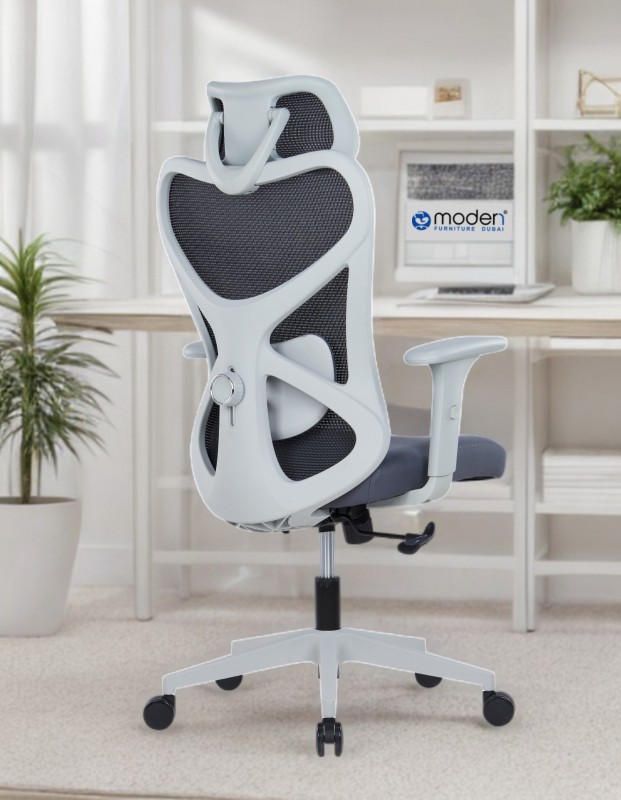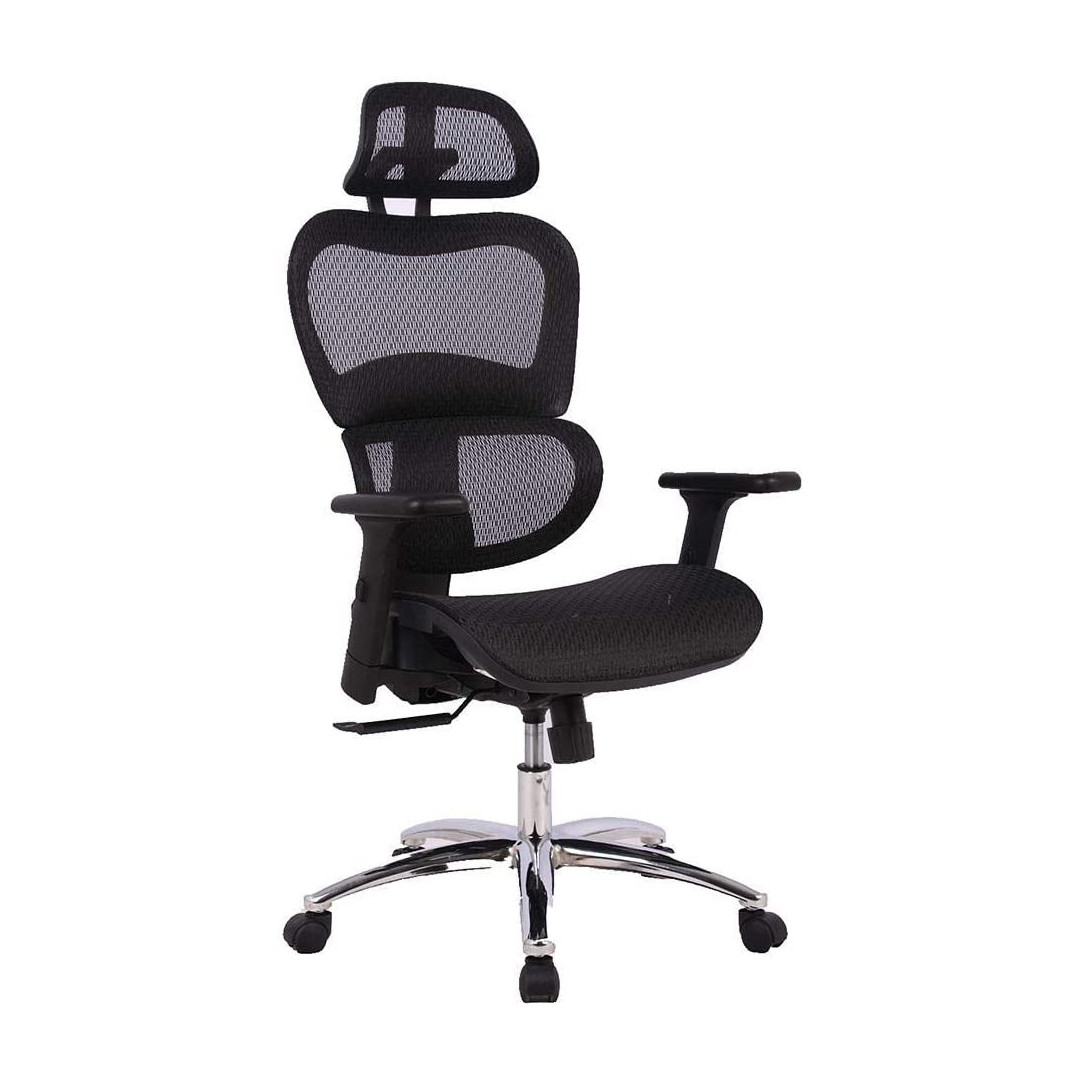
Understanding the Importance of Waterfall Seat Edge Design in Office Chairs
Introduction
When choosing an ergonomic office chair, we often focus on backrests, armrests, and lumbar support. But there’s one overlooked feature that greatly impacts comfort and circulation: the waterfall seat edge. Named for its gentle slope that curves downward at the front, this seat design helps reduce pressure on your thighs, supports better blood flow, and aligns with ergonomic best practices. In this article, we explore how the waterfall edge works and why it’s essential for healthy sitting.
1. What Is a Waterfall Seat Edge.
A waterfall seat edge is characterized by a rounded, downward-curved front edge on the seat pan. This design minimizes compression on the thighs, particularly the underside near the knees, and promotes better blood circulation.
2. Reducing Pressure on the Thighs
One of the key benefits of the waterfall edge is that it alleviates pressure that would otherwise build up on the femoral region. This results in less fatigue, less tingling, and reduced risk of developing circulation-related discomfort during long sitting sessions.
3. Enhancing Circulation During Extended Sitting
By preventing the seat from cutting into your thighs, the waterfall edge helps maintain proper blood flow to your lower legs. This is especially crucial for those who sit for several hours a day without frequent movement or breaks.
4. Supporting a More Natural Sitting Posture
The curved front encourages users to sit back fully into the chair, allowing the backrest and lumbar support to do their job. This leads to better spinal alignment and less tendency to perch or lean forward.
5. Improving Comfort for Users of Varying Heights
People with shorter legs often struggle with traditional seat edges that press into the back of their knees. Waterfall-edge seats help avoid this issue, making the chair more universally comfortable regardless of leg length.
6. Complementing Other Ergonomic Features
Waterfall seat design works best when combined with seat depth adjustment and high-quality cushioning. Together, these features allow the user to find an ideal sitting position without sacrificing circulation or comfort.
7. A Preventive Approach to Lower Limb Fatigue
If you've ever experienced swelling or tingling in your feet after sitting, poor circulation may be the culprit. Waterfall seat edges play a preventive role by avoiding constriction of major blood vessels.
8. Ideal for High-Use Work Environments
Whether you're working in a corporate office, home office, or creative studio, prolonged sitting is common. Chairs with waterfall edges reduce long-term wear on the body, making them especially useful in high-use workspaces.
9. Creating a Balanced Sitting Experience
In ergonomics, every feature should contribute to balance and stability. Waterfall edges contribute to a more centered, grounded seating posture that keeps pressure evenly distributed.
10. Enhancing Overall Chair Usability
When comfort improves, so does productivity. Users are more likely to sit properly and for longer periods when they aren’t distracted by leg discomfort. The waterfall seat edge supports that experience.
Additional Considerations When Choosing a Chair with Waterfall Seat Edge
Look for High-Density Cushioning
The best waterfall seats pair the curved edge with firm, supportive foam to keep your body elevated and avoid sagging over time.
Confirm Compatibility with Desk Height
Ensure your chair height allows your knees to stay slightly lower than your hips. This maximizes the benefits of the waterfall curve by maintaining open angles at the knees.
Consider Adjustable Seat Depth
Being able to slide the seat forward or backward ensures your thighs get support without pressing into the knee area—a great companion feature to the waterfall edge.
Evaluate Fabric Breathability
Mesh or breathable upholstery can enhance comfort by preventing heat and moisture buildup, especially around the seat edge where skin contact is constant.
Test with Leg Positioning
When trying out a chair, check if you can sit with your feet flat and knees comfortably bent without the seat pressing into your calves. This helps confirm a good ergonomic fit.
Keep Feet Grounded
Footrests may be necessary for shorter users to benefit fully from the ergonomic edge without having their legs dangle.
Monitor Circulation After Long Sessions
You’ll often notice the benefit of a waterfall seat after several hours—less numbness, reduced tingling, and fresher legs after a long day.
Consider Your Daily Sitting Time
The more time you spend seated, the more important this design becomes. It's a small feature with major cumulative benefits.
Pair with Proper Footwear
Avoid heels or constrictive shoes, as they can reduce circulation. Flat, comfortable footwear complements the benefits of the seat design.
Review User Feedback and Ergonomic Certification
When choosing a chair, seek out models with ergonomic certifications or high ratings specifically for long-term sitting comfort.
Recommended Products:

-
Ucomfort Super Ergonomic Executive Office Chair – White
Designed with a breathable mesh back, adjustable support, and a waterfall seat edge that gently reduces leg pressure for all-day comfort.
-
Ubreath Super Ergonomic Executive Office Chair
This chair features a deeply contoured seat with a waterfall edge, advanced recline mechanisms, and a full-body ergonomic profile—perfect for long work sessions.
Final Thoughts
The waterfall seat edge may seem like a minor detail, but it plays a major role in enhancing circulation, posture, and overall comfort. When paired with other ergonomic features, it transforms your sitting experience—making long hours at the desk far more manageable and healthy. Choosing a chair with this thoughtful design is an investment in daily well-being.
FAQ
Q: What is the main benefit of a waterfall seat edge?
A: It reduces pressure behind the knees and promotes healthy blood circulation, making long sitting sessions more comfortable.Q: Do all ergonomic chairs come with a waterfall edge?
A: Not necessarily. While many do, it's important to check for this specific design feature if circulation and comfort are top concerns.


